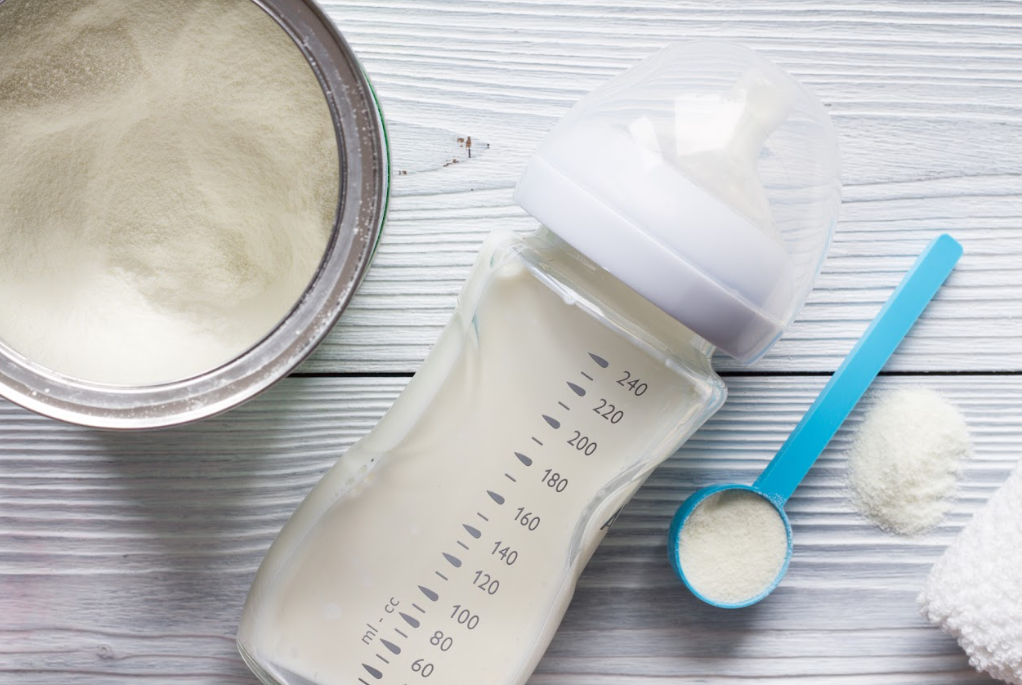Transitioning your baby from breastmilk to formula can be a significant change for the baby and the entire family. Understanding how to make this shift smoothly is crucial for the health and comfort of your infant.

This guide comprehensively examines the steps, considerations, and tips on how to transition baby from breastmilk to formula.
Understanding The Need For Transition
Before initiating the transition, it’s essential to understand why switching from breastmilk to formula is considered in various circumstances. Parents may consider this transition due to medical reasons, lifestyle changes, or the need for supplementation.
Whatever the reason, choosing a high-quality, gentle baby formula is paramount. These products are typically designed to be easy on your baby’s digestive system and closely mimic the nutritional profile of breastmilk. As a result, they can be an excellent choice for this transition phase.
Preparing For The Transition
Transitioning your baby from breastmilk to formula significantly changes their early nutrition. Here’s how to prepare for the transition:
Choose The Right Formula
Selecting the right formula involves considering nutritional content, formula types (such as cow’s milk-based, soy-based, hypoallergenic), and any specific needs your baby might have. It’s advisable to consult with a pediatrician to determine the best option tailored to your baby’s requirements.
Introduce The Formula Gradually
To make the transition smoother, introduce the formula gradually. Start by replacing one breastfeeding session with a formula feeding session and gradually increasing the number of formula sessions over several weeks. This approach can help your baby’s digestive system adjust and prevent bottle rejection.
Mix Breastmilk And Formula
In some cases, mixing breastmilk with formula in the same bottle can help ease the transition. This method allows the baby to gradually get accustomed to the new taste. Start with a higher proportion of breastmilk and slowly increase the amount of formula.
Implementing The Transition
Implementing the transition from breastmilk to formula involves careful planning and attention to detail. The following are guidelines that can help your baby adapt to the new feeding method:
Establish A Feeding Schedule
Creating a consistent feeding schedule is essential when transitioning from breastmilk to formula. Regular feeding times can help stabilize your baby’s daily routine and facilitate a smoother dietary shift. A predictable schedule allows your baby to feel secure and can significantly ease the transition, making them more receptive to new feeding patterns and methods.
Consider The Temperature And Consistency
It’s crucial to prepare the formula precisely by adhering to the manufacturer’s guidelines to ensure the correct consistency and nutrient balance. Serving the formula at a temperature that mimics breastmilk can greatly enhance your baby’s acceptance of the new food source. This familiarity in the feeding experience can comfort your baby and aid in a smoother transition.
Adopt Bottle Feeding Techniques
The transition from breast to bottle can also be a hurdle. Use a bottle with a nipple designed to mimic the breastfeeding experience. These are often labeled as ‘orthodontic’ or ‘natural feel’ nipples. Holding your baby in a position like breastfeeding during bottle feeds can also help make this new feeding method more acceptable.
Addressing Common Challenges
Dealing with the common challenges during the transition from breastmilk to formula is key to a smooth experience for both parent and child. Below are the strategies for overcoming these hurdles:
Refusal To Take The Bottle
Some babies may initially refuse to take the bottle. In these cases, have another caregiver introduce the bottle, as the baby may associate feeding with being close to the mother and breastfeeding.
Digestive Issues
Switching from breastmilk to formula can sometimes lead to digestive disturbances such as gas or constipation. Choosing a formula with prebiotics, which support a healthy gut, or consulting with a pediatrician for a special formula can alleviate these symptoms.
Emotional Adjustments
Remember that feeding isn’t just about nutrition but comfort and bonding. Continue to provide closeness and comfort during bottle feeds to help your baby adjust emotionally to the new feeding method.
Monitoring And Adjusting
Monitoring and adjusting during the transition from breastmilk to formula is crucial for your baby’s well-being. Here’s how you can make the necessary adjustments to their feeding regimen:
Keep Track Of Your Baby’s Reaction
Monitor your baby’s health, growth, and reactions to the new formula. Regular pediatrician visits are crucial during this transition period to ensure the baby adapts well and receives adequate nutrition.
Make Some Adjustments As Necessary
Be prepared to adjust the type of formula or feeding techniques based on your baby’s reactions and growth needs. Flexibility is key in finding what works best for your baby.
Conclusion
Transitioning from breastmilk to formula is a process that requires patience, persistence, and lots of tender loving care. By keeping the information mentioned above in mind, you can ensure a smooth feeding experience. Always consult with healthcare professionals when making decisions about your baby’s nutrition to ensure they receive the best care during their development stages.




